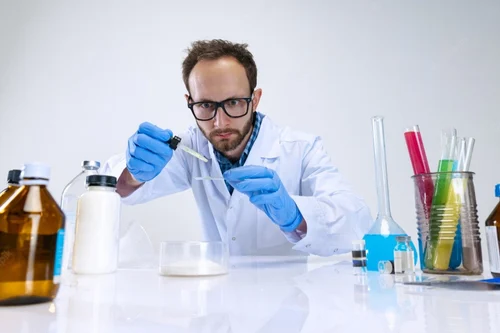Testing drugs occurs before they are approved, involving preclinical and clinical studies. These studies are designed to ensure that new drugs are safe and effective for their intended use. Various steps are involved in the drug testing process.
1. Preclinical Research
1.1 Discovery and development
This is the first step in the development of a drug, which takes place in a laboratory, where scientists identify and develop a new drug molecule. The discovery of the lead molecule is the initial process. The lead molecule is a chemical compound that has pharmacological or biological activity likely to be therapeutically useful. Once the lead molecule is found, it undergoes optimization.
These drug-like compounds are tested in vitro and in vivo to determine their effectiveness or action in treating specific conditions.
1.2 Animal Testing
Initially, the drug is tested in animals (rodents) to assess its safety, pharmacokinetics, which includes absorption, distribution, metabolism, and excretion, and pharmacodynamics. This helps provide preliminary data on how the drug acts in the body and what its potential side effects are. These phases provide significant information.
2. Investigational New Drug Application
If the preclinical data are significant, and there is no safety risk and the drug’s effectiveness in animals is confirmed, the pharmaceutical company or researchers submit the IND application to regulatory agencies to begin the study in humans.
3. Clinical trials
Clinical trials are research studies conducted in people. Clinical trials are mainly divided into three phases, and phase 4 is known as post-marketing surveillance. The drug is approved in phase 3; after approval, it proceeds to phase 4
3.1 Phase 1
The drug is tested on a small number of healthy volunteers in this phase, which primarily focuses on safety. Typically, this phase involves 20 to 80 volunteers and assesses the pharmacokinetics of the drug.
3.2 Phase II
The ultimate goal of this phase is to obtain preliminary data on whether the drug works in patients who have a certain disease or condition. This phase involves 100 patients. In these studies, short-term side effects and the efficacy of the medicine are assessed. It also helps determine the dosage of the drug.
3.3 Phase III
This phase involves large-scale studies involving thousands of patients. This phase confirms the safety and efficacy of the drug, monitors side effects, and collects additional information about the risk and benefit.
If Phase III is successful, the pharmaceutical company submits a New Drug Application to the regulatory authority. This process includes a review of professional labeling and inspection of the manufacturing site. If the review is accepted, the FDA may approve the drug for marketing.
3.4 Phase IV
This phase will take a long period of time and can last for many years. When the drug becomes available on the market, it enters Phase 4, which is why this phase is known as Post-Marketing Surveillance. Phase 4 results in long-term benefits of the drug, new indications for the drug, and an assessment of its long-term safety and effectiveness.
The drug enters the market by following these long-term processes. It can be recalled at any time during Phase IV. The ultimate goal is to ensure that the benefits of the drug outweigh its risks and that it is safe and effective for its intended use. This process also involves communication between the pharmaceutical company and the regulatory agency.


